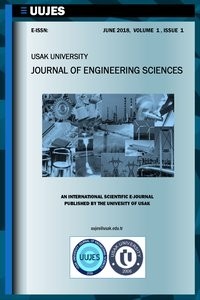RAMAN SPECTROSCOPY AND CURE KINETICS STUDIES OF A DLS 772 AND 4 4’DDS EPOXY SYSTEM DURING THERMAL AND MICROWAVE CURING
RAMAN SPECTROSCOPY AND CURE KINETICS STUDIES OF A DLS 772 AND 4 4’DDS EPOXY SYSTEM DURING THERMAL AND MICROWAVE CURING
Raman Spectroscopy Epoxy, Microwave, Cure Kinetics,
___
- 1. Lee, H. and K. Neville, Epoxy Resins: Their Applications and Technology. First Edition ed. 1957.
- 2. F.Y.C Boey. B.H Yap; Microwave curing of an epoxy –amine system; effect of curing agent on the glass-transition temperature. Polymer Testing 20 (2001) 837 –845
- 3. J. Wei, M.C Hawley; Kinetics Modelling and Time-Temperature- Transformation Diagram of Microwave and Thermal Cure of Epoxy Resins. Polymer Engineering and Science 1995 vol 35 461 –470.
- 4. Thostenson, E.T. and T.W. Chou, Microwave processing: fundamentals and applications. Composites Part A: Applied Science and Manufacturing, 1999. 30(9): p. 1055-1071.
- 5. Carrozzino, S., et al., Calorimetric and microwave dielectric monitoring of epoxy resin cure. Polymer Engineering & Science, 1990. 30(6): p. 366-373
- 6. Baden Fuller, A.J., Microwaves: An Introduction to Microwave Theory and Techniques. Third Edition ed. 1990.
- 7. May, C.A., Epoxy Resins: Chemistry And Technology. 1987: CRc Press.
- 8. Silverstein, R.M., G. Clayton Bassler, and T.C. Morrill, Spectrometric Identification Of Organic Compounds. Fifth ed. 1991.
- 9. E. Samoladis; Effect of microwave curing upon the interfacial properties of model carbon /epoxy composites. MSc Dissertation.
- 10. Koenig, J.L., Spectroscopy of polymers. 1999: Elsevier Science Ltd.
- 11. ErtugrulCubukcu; Optical Spectroscopy of semiconducting solids
- 12. Young, R.J. and P.A. Lovell, Introduction to polymers. 1991: CRC.
- 13. J. Wei, Martin C Hawley and John D Delong; Comparason of Microwave and Thermal cure of Epoxy Resins. Polymer Engineering and Sceince 1993 vol 33 1132 – 1140.
- Başlangıç: 2018
- Yayıncı: Uşak Üniversitesi
COMPARISON OF CLASSIFIERS FOR THE RISK OF OBESITY PREDICTION AMONG HIGH SCHOOL STUDENTS
Emel KURUOĞLU KANDEMİR, Çağın KANDEMİR ÇAVAŞ, Ayça EFE
EVALUATION OF FATIGUE PARAMETERS ON POLYMER MODIFIED BITUMENS
Mg/Zn COMPOSITES PRODUCED BY MECHANICAL ALLOYING AND HOT PRESSING AND IN-VITRO BIODEGRADATION
Simay ERDİBİL, Serap CESUR, Rasim İPEK
Babatunde BOLASODUN, Ademola AGBELEYE, Richard DAY
NUMERICAL SOLUTION TECHNIQUES FOR CURRENT AND VOLTAGE VARIABLES IN ELECTRICAL (RLC) CIRCUITS
Falade KAZEEM, Ayodele VİCTORİA
INVESTIGATION OF THE WATER ABSORPTION PROPERTIES OF PULTRUDED HYBRID COMPOSITE PROFILES
